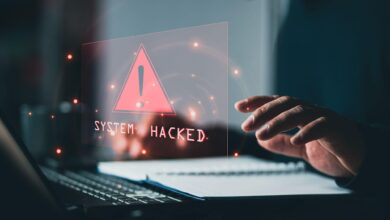
4 Protection Ideas Against Hackers and Identity Theft
Hackers and identity theft are only getting worse. Technological advances are advancing businesses like yours but it also gives hackers new opportunities to exploit their victims. Fast internet speeds, a variety of portable devices, and a bounty of cloud storage space are just a few of the reasons that businesses like yours are experiencing unprecedented success. Your clients are also better able to find just what they need when they want it, and where they need it.
With so much technology and multi-faceted success comes the responsibility to keep your business, employees, and clients safe from hackers. According to Ponemon Institute, the average price tag of a data breach was $3.62 million in 2017, and identity thieves show no sign of slowing down.
Adopt the following security tips that offer peace of mind and protection for your business, employees, clients, and any other stakeholders while working together in the digital business landscape.
Perform Regular Operating System and Software Updates
If your business’s operating system (OS) and software programs do not automatically update, make sure you set up regular times to do so manually. By skipping updates, hackers may find it easier to access and invade your system through undetected vulnerabilities in your outdated programs. At the same time, clean out old software programs that are no longer necessary, such as Flash or Java. Performing OS updates or allowing automatic updates is crucial in case there are time-sensitive security updates.
Provide an Identity Theft Protection Plan for Your Clients and Employees
An identity theft protection plan can go a long way toward helping your clients and employees feel more secure. While they probably know that you do everything possible to secure your system and their data, the world of data breaches is well understood and frightening. By offering your team identity theft protection, you can show clients and employees that your security is a priority from your end and theirs.
Add an Extra Layer of Protection with 2FA
Two-factor authentication, or 2FA, provides one more layer of authentication—in addition to a password—to grant access to your account, shares Inc. Options available include voice, fingerprint, or selecting or generating a code sent to your smartphone via SMS. Ensuring that your team performs 2FA practices and recommending that your customers do so can help prevent hackers from making a lucky guess on a password.
Comply with the PCI DSS
The Payment Card Industry Data Security Standard (PCI DSS), created by the PCI Security Standards Council (SSC), is essential for businesses that accept, transmit, store or discard cardholder data, per the PCI Compliance Guide. By learning, adopting, and complying with the requirements of PCI DSS, you stand a greater chance of staying on top of industry issues and avoiding them.
Your customers and employees are too valuable to risk losing, so taking a multidirectional approach to security are worth it. Everything from providing an identity theft protection plan for complying with the latest industry requirements can help you maintain peak levels of security for everyone involved, including your business.






